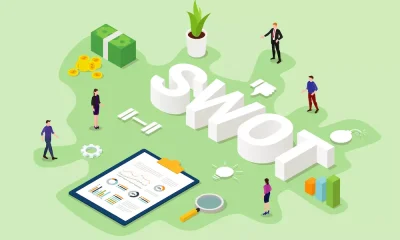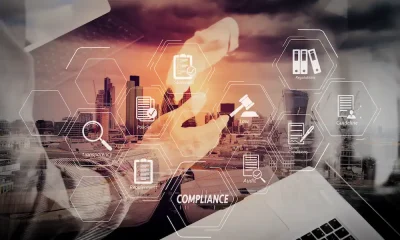Management
7 Pieces of Safety Equipment You Need at Work

Millions of American workers are injured on the job every year. The most substantial cost is the thousands of lives that are lost, but there is also a huge financial burden. OSHA estimates that business owners collectively pay $1 billion a week for workers compensation alone. However, that is only one direct cost.
An injury could be simple, or it could be severe. Serious injuries have a lasting impact that can affect mental health, physical capabilities and financial security. A serious injury can produce side effects that lower quality of life and inhibit a person’s ability to continue working.
Everyone should be heavily invested in improving workplace safety. It’s good for your health and your bottom line whether you’re an employee or the employer. In many cases, all that’s needed to prevent injuries is the right safety equipment.
Safety Equipment That Reduces Work-Related Risks
Safety Glasses
Eyes are one of the most delicate areas of the body. All it takes is one minor injury to permanently alter a person’s eyesight.
The easiest and most effective to protect eyes is by wearing safety glasses. Safety glasses and goggles are made of materials that are lightweight, durable and shatterproof. You can get standard safety glasses and prescription safety glasses. Standard glasses are readily available in stores and you can find affordable ANSI prescription safety glasses online.
Back Braces
Back injuries are among the most common work-related injuries. Injuring the back while lifting or carrying heavy objects can cause immediate pain as well as chronic problems that can last for years. That’s why one of the first steps taken after an injury on the job is fling a workers compensation claim.
Anytime you’re lifting, strap on a back brace. A back brace provides support and helps hold the spine in a position that reduces the risk of injury. It’s also a good idea to use other pieces of equipment like dollies and flatbeds whenever possible.
Warnings Signs
Warning signs can be used to alert workers of potential dangers so that injuries can be sidestepped. Simply putting a “wet floor” sign out can prevent a serious slip and fall injury. A sign that warns of electrical dangers can save someone from being electrocuted.
Take a tour through your office or facility with the express purpose of looking for potential dangers. Make a note of each one and plan to have a warning sign created to alert others. Also, read through OSHA’s accident prevention sign regulations.
Hard Hats
Hard hats are a common sight on construction sites, but it can be a vital piece of safety equipment in many other work environments. If there’s any risk that workers can be struck in the head by heavy objects or a piece of equipment, hard hats should be worn. This includes indoor facilities such as warehouses and large stockrooms.
Workers should also wear a hard hat or helmet any time they climb a ladder or stand on a roof. Falls are another common work-related injury that many times results in traumatic head injury or death.
Fire Extinguisher
This one piece of safety equipment could end up saving many people’s lives and an entire facility. Fire extinguishers should be placed throughout the office or building. Make sure that the fire extinguisher is the proper type for the potential threat. For example, kitchens and breakrooms should be equipped with an A-B-C fire extinguisher.
Non-Slip Rugs
Many work surfaces are made of hard materials that can become slippery with the slightest bit of moisture. Non-slip rugs are designed to bring to the surface even during slippery conditions. They are ideal for kitchens, wash areas and outdoors.
Safety Barriers
Machine entanglement is a real concern in many workplaces. The result is often a serious injury such as amputation or paralysis. All employees should be trained to keep their distance from heavy machinery, but sometimes additional measures need to be taken.
You may need to install safety barriers to prevent accidental contact with machines. Ballards can also be put in place to keep people and vehicles away from electrical components and other hazardous equipment.
The safety equipment above can be put into action today to reduce the risk of injury and increase productivity. It’s a small investment to protect the business’s most valuable asset.






